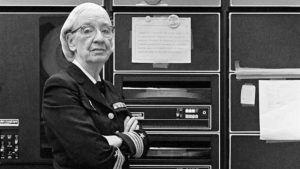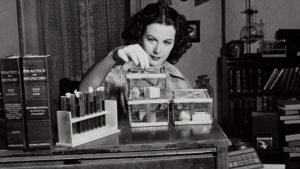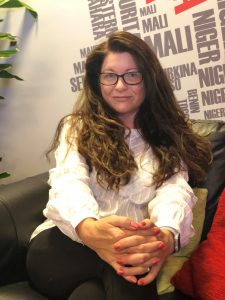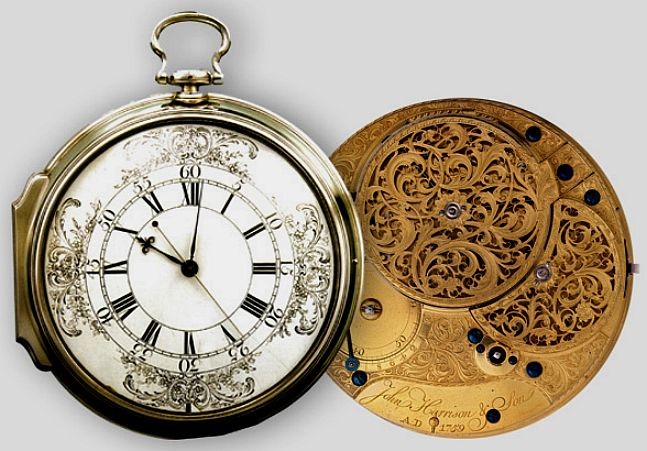Three hundred years ago, the British government had a major problem. The country had survived near bankruptcy under the Tudors but had found fortune on the high seas as it expanded its empire. But the risk of its ships, often through navigational mistakes, being lost remained painfully high. More than 1,500 sailors died when their vessels ran aground in the Scilly disaster of 1707. For centuries, navigators knew how to find their latitude from the position of the sun in the sky. But longitude was much more difficult because they had no way to tell the time accurately.


Grace Hopper
The success of British commerce relied on an engineering breakthrough. But the solutions that came from established scientists were impractical and occasionally bizarre. Two renowned mathematicians proposed launching rockets from ships anchored across the ocean so passing vessels could estimate their distance from the explosions by comparing the flashes and the sound. Shortly afterwards, in 1714, Parliament decided it needed to seek help from further afield and set up the Longitude Prize: offering £20,000 to anyone who could design a more practical system. That meant designing a chronometer that could keep time on a ship being tossed around by ocean waves.
The work took years but John Harrison, who had followed in his father’s footsteps as a carpenter used his long-time interest in clocks to come up with a design that could work reliably on board a ship. Though he never collected the full reward from the Longitude Board, by the start of the 19th Century, mariners came to depend on Harrison’s approach to timekeeping. And songs told of Britain ruling the waves. It is a testament to the way in which engineering ideas that change history can come from anywhere and why it is so important to encourage people to keep making things. Without Harrison’s practical curiosity in disassembling and then designing his own clocks, the longitude puzzle could have taken much longer to solve.


Hedy Lamarr
Ideas can come from anywhere and can take just as long to become accepted as Harrison’s struggles with both manufacturing and the British government. Two centuries later, Hedy Lamarr worked as an actress. But in her spare time she was a keen inventor. She had no formal training but had been able to meet many scientists and technologists as she became famous for her roles in movies, initially in her native Austria and Europe and then Hollywood. During World War II she heard the enemy had quickly found a way to jam the steering commands sent to the radio-controlled torpedoes the US Navy had introduced. She worked out that the best way to deal with the jamming signal was to make the original signal much less predictable.
George Antheil, a composer friend helped Lamarr develop a device that would let the signal hop across different frequencies, using a player-piano mechanism to provide the coding. Each mark on the piano roll moved to a new frequency, making it possible to encode the hopping in a way that would be very difficult for the enemy to predict and, as a result, jam. The invention gained a patent in 1942 but the US Navy refused to work with it. The organisation cited technical difficulties but was known for preferring to use only inventions from its own engineers.


History Makers
Half a century later, Lamarr’s idea of frequency hopping finally found a mainstream application as part of the Bluetooth standard. The protocol for personal area networks uses the concept of frequency hopping to avoid being inadvertently jammed by other competing signals in the heavily used unlicensed spectrum around 2.4GHz. Her work also influenced the direct-sequenced form of spread spectrum that is used in WiFi as well as the signals sent by Global Positioning Systems satellites – which need to avoid being jammed, like the torpedo commands, by hostile forces. So many years had passed since the original patent appeared that it took some time for Lamarr’s contribution to be recognised widely. But her reputation as a pioneering inventor is now secure.
In contrast to Lamarr, Grace Murray Hopper had formal training in mathematics and the advantage of working for the US Navy when she developed a way to make computing much more efficient. But she worked in a part of the computing industry that its architects had deemed unimportant: software. British computer scientist and developer of the EDSAC Maurice Wilkes, later recalled how he had been surprised when trying to develop for the machine he had built in 1949: “It had not occurred to me that there was going to be any difficulty about getting programs working.”
A century earlier, Ada Lovelace, another outsider with a keen interest in engineering, had seen the potential in programming a machine such as Charles Babbage’s Difference Engine. But it would take a revolution of ideas much later for her ideas to be recognised.
To the first computing hardware engineers, a computer was human: someone who computed the answers to a difficult problem but who could turn to an automated system as one would today to a pocket calculator. So, the first programmers of electronic calculating machines were primarily women who were skilled mathematicians who could analyse each intermediate result and work on the next step. The idea of a stored-program computer formed quite slowly and it was the wife of computer architect John von Neumann, Klára Dán who developed the first software for it. But one of her fellow programmers, Betty Holberton, had to work hard to convince John von Neumann to give the machine a much-needed stop instruction.
Hopper, through experience, was keenly aware of the problems that faced those writing software and saw the need to make programs easier to write and debug. But it took three years to convince the management of the Eckert-Mauchly Computer Corporation, where she worked in the early 1950s, of the importance of creating a high-level language that used English words rather than obscure alphanumeric instruction codes. Eventually, she gained the opportunity to put the idea into practice but even then management thought compilers could only cope with simple arithmetic and not more complex concepts. She persevered and ultimately was able to pull together the team that would create Cobol, the first widely accepted high-level language. By the time Hopper became director of the US Navy’s Programming Languages Group in the late 1960s, software engineering had become the driving force of computing. And mainframes running programs written for another language, Fortran, were on the way to putting men on the Moon.


Leonie Clayson, DesignSpark Community Manager
Poised as we are at the beginning of the fourth industrial revolution, the role of the outsider in influencing the direction of the future of engineering is as important as it was when John Harrison was working before the start of the first industrial revolution, or when people such as Lamarr and Hopper worked on the concepts that ultimately drove the IT-powered third revolution. Inventors and makers provide vital input to the way technology is moving and that is one of the reasons why RS has put together History Makers – a series of light-hearted podcasts that bring the inventors of yesterday face to face with technology of today, from WiFi to 3D printing in a blast of jokes, facts, sketches and songs and which highlight how engineering has changed our lives.
The History Makers podcasts are available to download from www.designspark.com,
www.designspark.podbean.com and the iOS Podcast app by searching for
DesignSpark.







